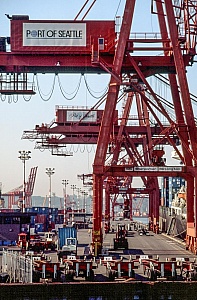Untangling Fed Policy And What It Means For Specialty Retailers

There's been a lot of conversation lately about the future direction in Federal Reserve
policy as we work our way through this recession, toward recovery. There has been a chorus of voices lately arguing back and forth about what the Fed should do, and is likely to do next.On one level, we find ourselves in the middle of the classic conflict between the Fed's two stated missions, to maintain price stability and to promote economic growth. Over the past year, the Fed's primary focus has been on pumping money into the economy to fight the recession (and keep the financial system afloat). All of this money flowing into the system, however, creates significant inflation risk as we go forward.
There have been several vocal advocates on each side of the issue pressing their points of view. In this morning's New York Times, Paul Krugman argues persuasively that the Fed can't take their foot off the pedal too quickly, that any economic recovery will be fragile and the Fed must continue to follow an aggressive pro-growth strategy. He maintains that the slack in the economy will keep the risk of inflation low. He is very focused on the current level of unemployment.
On CNBC, Rick Santelli and Larry Kudlow argue passionately every day for a clear signal from the Fed on how and when it plans to pull in the reins on all the liquidity it's pumped into the system. They see clear inflation dangers on the horizon. They point to rising interest rates and a weakening dollar as indicators that markets are already pricing inflation into their expectations, and maintains that rising interest rates and a weakening dollar risks short-circuiting any recovery before it begins.
Last week on CNBC, Mohammed El-Erian, CEO of PIMCO, a major investment firm focusing on the bond markets, argued that both positions were well taken, and that the issue comes down to the frequent conflict, particularly acute in the present moment, between short-term imperatives and longer-term risk. As is his way, he succinctly stated that the issue isn't what the Fed should do, it's what the Fed is likely to do, and in his opinion, the Fed is likely to continue aggressively stimulating the economy for the foreseeable future.
This macro-economic tangle has direct implications for specialty retailers. The Fed is likely to continuing pumping stimulus into the system until it's certain that a recovery has taken hold. There is a recovery coming, and it's likely that it's just around the corner. With all the slack in the economy, the recovery is going to be modest, however. Specialty retailers should not be expecting the recovery to immediately return them to previous revenue levels. Sales will likely turn by the time we get to the holiday selling season, but growth will be slow. Recovery will be stronger for mass-market and mid-tier retail than for specialty retail as a sector.
Prudence remains the watchword. It will continue to be important to choke up and consistently hit singles rather than swinging for the fences. Inventory and expense discipline will be essential to maintaining positive cash flows.
When the Fed does begin to pull back, when it believes the risks of inflation are becoming greater than the risks to economic growth, their pullback will dampen any momentum that the recovery might be gaining. When that time comes, the Fed will certainly be threading the needle. At that point, they will likely settle for modest growth with modest inflation risk rather than more robust growth with more significant inflation risk.
Over the longer term, therefore, specialty retailers need to be thinking about adding value to their value propositions. Because few specialty retailers compete on the basis of price, this differentiation must continue to take place in the realm of the customer experience, by bringing fresh passion to employees and customers alike, improving employee engagement, providing exceptional customer service and flawlessly executing all of the details.
Many specialty retailers, especially independents, look at the new normal, and wonder if there's a place for their businesses, if they can survive and once again thrive. The answer is unequivocally yes, but it's going to take fresh focus and commitment. These are truly challenging times.
Copyright (c) 2012 Ted Hurlbut
by: Ted Hurlbut Forex Trading Mysterious Secrets - Learn More About It The Wholesale Prices Of Toms Shoes Are Available How Forex Trading Is Just Not Limited To The Rich Foreign Exchange Trading System Minimising Volatility For The Airline Industry -part Two Emissions Trading Scheme & Hedge Accounting Minimising Volatility For The Airline Industry-part Three: Emissions Trading Scheme In Practice Option Trading Tips To A Great Jumpstart Trading Forex Market For A Living Inventory Management Tips & Techniques For Wholesalers Buy Wholesale Cupcake Boxes For Cheap, But Still Alluring, Pastry Wrapping Online Fashion Retailers Can Help You Save Lots Of Cash Using Relative Strength Index (rsi) To Maximize Stock Trading Profit Trading Judgments